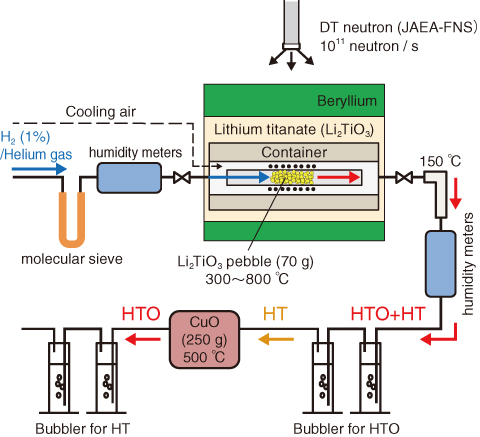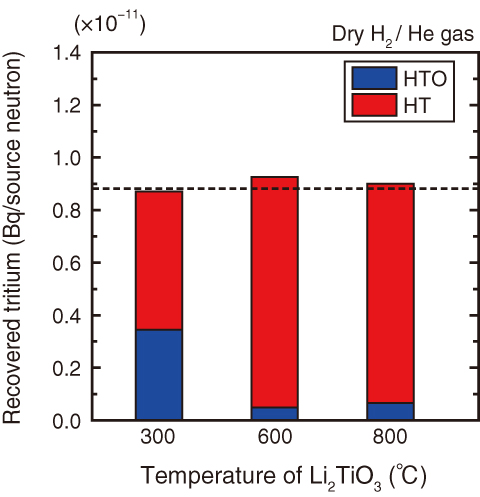
Fig.9-25 JAEA-FNS tritium recovery experiment apparatus

Fig.9-26 Result of the JAEA-FNS tritium recovery experiment
Tritium used as fuel in fusion reactors will be produced by nuclear reactions between lithium and neutrons generated by DT fusion reactions, like 6Li (n, α)3T. It is important to investigate methods to recover the tritium produced in the “blanket,” which is a key part for the development of a fusion reactor. To investigate the recovery of the tritium produced, we have conducted a series of tritium recovery in situ experiments using the DT neutron source at JAEA’s Fusion Neutronics Source facility (FNS).
We irradiated an experimental assembly that simulated a fusion blanket (Fig.9-25) and recovered the tritium produced in the Li2TiO3 pebbles that filled the assembly by sweeping with helium gas mixed with a small amount of hydrogen (H2, 1%). During the neutron irradiation, the Li2TiO3 pebbles were heated to temperatures ranging from 300 ℃ to 800 ℃ by a heater set near the pebbles.
To remove water moisture from the gas emerging from the gas cylinder, a molecular sieve (MS) was inserted in the line to the inlet of the assembly. Among the tritium (HT and HTO) produced in the Li2TiO3 pebbles and swept in the gas, only the tritiated water (HTO) was collected to the first bubblers. A copper oxide bed was set upstream of the second bubblers to oxidize the tritium gas (HT) component to HTO, since the second bubblers could collect only the HT component generated in and released from Li2TiO3 pebbles. The recovered tritium was measured with a liquid scintillation counter.
As shown in Fig.9-26, for the first time, the total amount of tritium recovered from the Li2TiO3 pebbles was found to be almost the same regardless of the temperature and in good agreement with the tritium production amount calculated. This means that the tritium produced in the blanket can be recovered by sweeping with the helium-hydrogen (H2, 1%) gas mixture. The percentage of tritium released into the sweeping gas in the form of HT was only 40% at 300 ℃, but increased up to 95% at higher temperatures. The HT ratio at 800 ℃ was almost the same as that at 600 ℃.